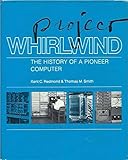Found in 3 comments on Hacker News
hga · 2016-05-20
· Original
thread
To amplify how desperate people were for memory, back before the Whirlwind people came up with 3D core memory they were considering among other things a microwave version of mercury delay lines, running a signal out to western Massachusetts and back. All that and lots more in this gem of a book: http://www.amazon.com/Project-Whirlwind-History-Pioneer-Comp...
hga · 2010-05-11
· Original
thread
Boy, there are many things wrong with this account; here's two things, for the full story get a copy of this book: http://www.amazon.com/Project-Whirlwind-History-Pioneer-Comp...
And I'll note it's still relevant, we still build computers in the general approach this team developed. At a talk I attended in the '80s, Forrester said that he got out of hardware after Whirlwind since all the interesting (to him) problems had been solved. And I can see why he'd think that.
Anyway:
Jay Forrester and company initially sold it to the Navy for flight simulators, but they knew this sort of computer would be needed for much more.
Whirlwind initially used CRT based storage, as did IBM's first two computers. The UNIVAC I used mercury delay lines: http://en.wikipedia.org/wiki/Delay_line_memory


Although "logic" might not make clear what we're talking about, it's things like parallel execution, modularity, 3D core memory, the first seriously useful form of it which got us going until DRAM, etc.
Note HN has this currently larger discussion of him: https://news.ycombinator.com/item?id=12983740